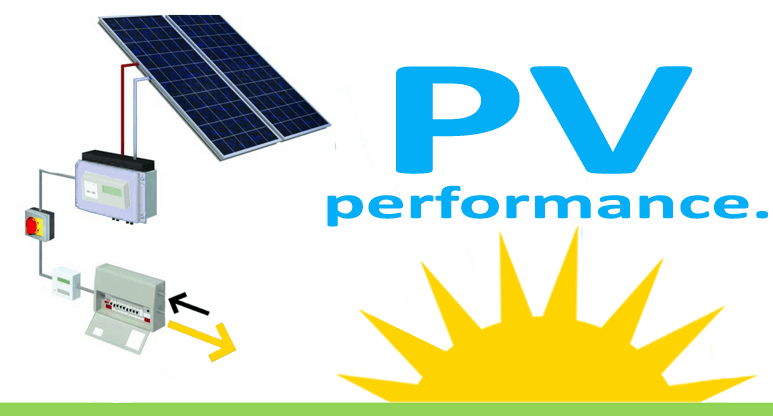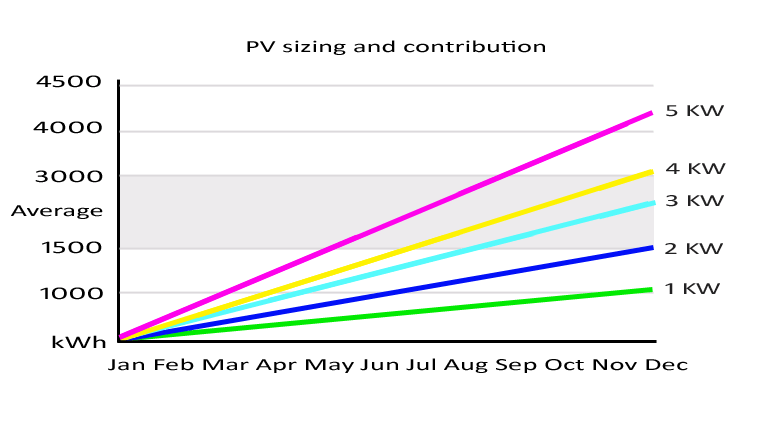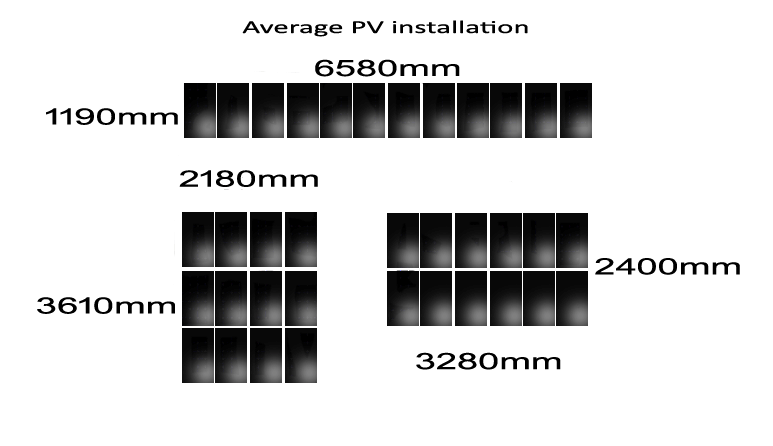

PV (photovoltaic) solar panels and installations
"Photo refers to light, and voltaic to electricity. People can install on-grid or off-grid photovoltaic systems with variable storage options. A PV system with ancillary products such as battery storage, water heating, and car charging offers a full spectrum of benefits. A single 1 kW PV array generates approx 900 kWh/year. Domestic systems range from 3-10 kW sized arrays."
Stuart Lovatt
Creator of Power My Home.

"Already we are amazed at the amount of free energy our solar system produced and are looking forward to our first tariff cheque from our energy supplier. This system is now an integral part of the fabric of our home, with the bonus of solar energy. You can truly beat the system."
Mr. Bowles, Milton Keynes.

The science bit.
The UK absorbs around 50-60% of The Sun's radiation compared to the equator. Photons of light strike the electrons in the p-n junction and energize them, knocking them free of their atoms. These electrons are attracted to the positive charge in the n-type silicon and repelled by the negative charge in the p-type silicon. Electrons align into the circuitry to create a current:
- Photovoltaics use semiconductor materials that react to sunlight.
- The inverter switches electrons from DC to AC.
- Output is used, stored, or exported.
- Output data is correlated.
PV systems are a 'solid-state' conversion process with no moving parts.

Common questions about PV solar panels
Is PV financially worth it?
Add your annual energy/fuel costs x 30 years (panel lifespan.) Add inflationary pressures = your approximate future energy costs. Now compare to the cost of installing.
Let's do the math:
A house consumes the national average of 3800 kWh per year, and PV solar panels generate 3500 kWh per year.
The price of electricity per kWh is 0.12 pence (approx). Energy Saving Trust quotes an average saving of 125.00 per year for a typical home. They specify 0.145 pence per kWh.
125.00 divided by 0.145 = 862 kWh used in the home from the generated solar PV system or a saving of 23% of the 3,800 kWh. If you use 3,800 kWh per year, use an average 10.41 kWh per day.
3 KW solar PV generating on south-facing roof 3000 kWh per year. The unit price of electricity per kW is 0.13 pence.
According to the Energy Saving Trust, PV savings without Battery storage is 125.00.
The EST quote 0.145 price per kW, so 125 divided by 0.145 is 862 kWh per year.
Battery Storage savings over 300 days @ 5KW (size of the battery bank) 1500 kWh @ 0.13p =195.00.
Export tariff payment: 3000 kWh @ 4.3 p =129.00.
Export payments 3000/2 x 4.86p =72.90.
The total savings for year 1 =125.00 +195.00 +129.00 +72.90 = 521.00 GBP.
Savings from PV-water storage heating are at approx 200 GBP.
721.00 GBP per year.
Minimum operational lifespan = 25 years. Maximum operational lifespan = 40 years.
TOTAL: 25 years x 721 = 18,025 GBP excluding EV-charging benefits. Geographical and usage variables apply.
Surplus and export tariffs.
Modern inverters optimise usage capabilities or feed into the National Grid. If not stored, it automatically directs via an export tariff scheme. Any deficit in power generation automatically draws from your electricity supplier as per usual.
Micro-Inverter or String Inverters?
Both inverter types have positive and negative attributes.
String Inverters are the original way of altering Direct Current to a more useful Alternating Current. Micro-Inverters are additions added to each panel on the roof.
Mico-inverters are more complicated to install and typically add about 20% more to the cost of installations. The simpler String-Inverter makes PV more affordable to more people and easy to access for maintenance.
Micro-Inverters are recommended if shading is an issue, such as a split-roof configuration. Micro's offer a negligible increase in performance, but from a longer-term maintenance point of view, they're costly to replace if required. Any performance advantage may be debatable.
Unless there is a specific reason, I advocate keeping it simple by installing a traditional String Inverter.
Myth busted.
In reality, photovoltaic cells work more efficiently in cooler temperatures. Panel degradation occurs much quicker in hotter climates, just like redlining a car engine will reduce the lifespan and efficiency of the engine.
Can PV heat water?
PV-to-hot water converters heat immersion-based tanks with solar-generated electricity directed to the heating coil. This device eliminates the requirement for boiler usage most of the year.
Can I self-install?
DIY grid-tied installations are not possible. MCS safety requirements are necessary, but installing an off-grid system with a local tradesperson may be an option.
How much roof space?
Depending on the size of the array, PV solar panels take up a lot of roof space, but most homes in the UK are suitable. Additionally, they can be ground-mounted A-frames if garden space or land allows.

Do I need planning permission?
No planning permission is required unless listed or in a conservation area.
Do solar panels work on cloudy days?
This answer depends on the density of the cloud. A solar-powered calculator will work fine outside in most daylight hours. A PV system works on cloudy days, just not at peak performance.
How long does a PV system last?
Photovoltaics installed in the 1960s are still working today. Degradation is a minimal consideration when choosing a system. Monocrystalline solar panels still have an 80% generation capacity after 20 years. Many of the earliest PV adopters may be experiencing reduced performance due to the inverter's end of working life. Therefore, I recommend upgrading your inverter to enable storage in the latter half of a system's life.
What about Electronic Magnetic Frequencies?
Yes, solar panels and battery storage devices will generate strong Electronic Magnetic Frequencies (EMFs) within your home. This problem is mitigated by using and earthing EMF shielding in the loft space and around the battery and the inverter.
The history of photovoltaic technology.
It was the French scientist Edmond Becquerel who first discovered the photovoltaic effect in 1839. This effect occurs when sunshine is absorbed and creates an electrical charge. Modern PV solar cells use silicon crystals to improve this effect. The first solar cells capable of powering electrical equipment were commercialised in 1956 by Western Electric.
What about cleaning solar panels?
Photovoltaic solar panels have microscopic layers of titanium dioxide during manufacturing. When ultraviolet light falls on the glass, the coating reacts with organic matter to break it down. However, a periodic cleaning using de-ionised water will ensure the best performance.
New world savvy.
"I've witnessed many fantastic changes, innovations, and installation companies come and go. My fellowship with ethically-minded MCS solar panel installers goes back decades. Today, I offer my experience to ensure you gain real independence from this crazy geopolitical world."
Stuart Lovatt
Power My Home Solar Panels
Sundial House, Panton Road, Chester CH2 3HX.
01244 722 607
Est. 2004.